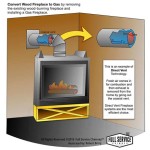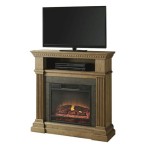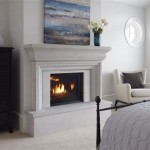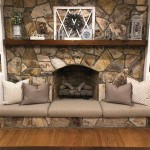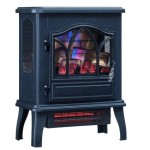How To Remove White Paint From A Brick Fireplace
A brick fireplace can be a stunning focal point in a home, exuding warmth and character. However, the aesthetic appeal can be diminished when the brick is covered with paint, particularly white paint that might obscure the natural textures and colors of the brick. Removing white paint from a brick fireplace is a labor-intensive but achievable project that can revitalize the fireplace and enhance the overall ambiance of the room. This article provides a comprehensive guide on how to approach this task safely and effectively.
Before commencing any paint removal process, it is crucial to assess the type of paint used and the condition of the brick. Multiple layers of paint may necessitate a more aggressive removal method, while old or fragile brick might require a gentler approach to prevent damage. Understanding these factors will help determine the most appropriate method and materials to use.
Furthermore, local regulations regarding waste disposal should be consulted. Some paint removal methods, particularly chemical strippers, can generate hazardous waste that requires special handling and disposal. Familiarizing oneself with these regulations beforehand will ensure compliance and responsible environmental practices.
Preparation is Paramount
Proper preparation is essential for a successful paint removal project. This stage involves protecting the surrounding area, assembling the necessary tools and materials, and taking safety precautions. Neglecting these preparatory steps can lead to damage to the surrounding surfaces and potential health hazards.
First, protect the surrounding area. This includes covering the floor, walls, and any furniture near the fireplace with drop cloths or plastic sheeting. Secure the coverings with painter's tape to prevent them from shifting during the work. Careful covering will minimize the cleanup required after the paint removal process.
Next, assemble the necessary tools and materials. These typically include: paint stripper (chemical or eco-friendly), a variety of stiff-bristled brushes (nylon and wire), scrapers (plastic and metal), a heat gun (optional), putty knives, sponges, buckets, water, trisodium phosphate (TSP) or a similar cleaning solution, safety glasses, gloves, and a respirator or dust mask. The specific tools and materials required will depend on the chosen paint removal method.
Prior to starting the paint removal, a small, inconspicuous area of the brick should be tested with the chosen method. This allows for an assessment of the effectiveness of the method and any potential damage to the brick. This test patch is crucial for identifying unforeseen issues and adjusting the approach as needed.
Finally, prioritize safety. Always wear safety glasses to protect the eyes from splashes and debris. Gloves are essential to protect the skin from chemical strippers and abrasive cleaners. A respirator or dust mask should be worn to prevent inhalation of paint particles and fumes, especially when using a heat gun or chemical strippers. It is also advisable to ensure adequate ventilation in the work area by opening windows or using a fan.
Methods for Removing Paint
Several methods can be employed to remove white paint from a brick fireplace, each with its own advantages and disadvantages. The choice of method depends on the type of paint, the condition of the brick, and personal preferences regarding safety and environmental impact.
Chemical Strippers: Chemical paint strippers are designed to soften and lift paint from surfaces. They are effective for removing multiple layers of paint and can penetrate intricate details of the brick. However, chemical strippers can be harsh and require careful handling due to their toxic fumes and corrosive properties.
When using a chemical stripper, apply a thick, even layer to the painted brick surface, following the manufacturer's instructions regarding application time and safety precautions. After the recommended dwell time, use a plastic scraper to remove the softened paint. For stubborn areas, a stiff-bristled brush can be used to scrub the paint loose. Multiple applications may be necessary for thick layers of paint.
After removing the paint, the brick must be thoroughly cleaned to remove any residual stripper. This typically involves washing the brick with a solution of TSP and water, followed by rinsing with clean water. Ensure the brick is completely dry before applying any sealant or finish.
Heat Gun: A heat gun uses hot air to soften the paint, making it easier to scrape away. This method is less messy than chemical stripping and does not involve harsh chemicals. However, it can be time-consuming and may not be suitable for all types of paint. Prolonged heat exposure can also damage the brick, particularly if it is old or fragile.
When using a heat gun, hold the nozzle a few inches away from the painted surface and move it slowly and evenly. As the paint softens, use a scraper to remove it. Be careful not to overheat the paint, as this can cause it to burn and release harmful fumes. Work in small sections to prevent the paint from cooling and hardening before it can be removed.
After removing the paint, clean the brick with a brush and water to remove any residue. A mild abrasive cleaner may be used for stubborn areas. As with chemical stripping, allow the brick to dry completely before applying any sealant or finish.
Pressure Washing: Pressure washing can be an effective method for removing paint from brick, particularly for large areas. However, it can also damage the brick if not done carefully. The high-pressure water can erode the mortar joints and cause the brick to crumble, especially if the brick is old or the mortar is weak.
When pressure washing, use a wide-angle nozzle and start with a low-pressure setting. Gradually increase the pressure until the paint begins to lift, but avoid using excessive pressure that could damage the brick. Maintain a consistent distance between the nozzle and the brick surface to prevent uneven removal.
After pressure washing, inspect the brick for any damage, such as cracked mortar or crumbling brick. Repair any damage promptly to prevent further deterioration. Allow the brick to dry completely before applying any sealant or finish. Due to the potential for water damage, pressure washing is generally not recommended for interior brick fireplaces unless proper drainage and ventilation can be ensured.
Eco-Friendly Paint Strippers: Environmentally friendly paint strippers offer a less toxic alternative to traditional chemical strippers. These products are typically made from natural ingredients and are biodegradable. While they may not be as effective as traditional strippers for removing multiple layers of paint, they are a safer option for both the user and the environment.
The application and removal process for eco-friendly strippers is similar to that of traditional chemical strippers. Apply a thick layer to the painted surface, allow it to dwell according to the manufacturer's instructions, and then scrape off the softened paint. Multiple applications may be necessary for thick layers of paint.
After removing the paint, clean the brick with water and a mild detergent to remove any residue. Ensure the brick is completely dry before applying any sealant or finish. While eco-friendly strippers are less toxic, it is still recommended to wear gloves and safety glasses during the application and removal process.
Post-Removal Procedures
Once the paint has been removed, it is essential to thoroughly clean and inspect the brick to ensure that all residue has been eliminated and any damage is addressed. This step is crucial for preparing the brick for any desired finishing treatments and ensuring its long-term integrity.
First, clean the brick thoroughly. Use a solution of TSP or a similar cleaning agent to remove any remaining paint residue, dirt, or grime. Scrub the brick with a stiff-bristled brush, paying particular attention to crevices and mortar joints. Rinse the brick thoroughly with clean water to remove all traces of the cleaning solution.
Next, inspect the brick for any damage. Look for cracks, chips, or crumbling brick. Damaged bricks should be repaired or replaced to prevent further deterioration. Cracks in the mortar joints should be repointed with fresh mortar to ensure the structural integrity of the fireplace.
After repairing any damage, consider applying a sealant to protect the brick from moisture and stains. A breathable sealant will allow moisture to escape from the brick while preventing water from penetrating. This is particularly important for exterior brick surfaces that are exposed to the elements. For interior fireplaces, a sealant can help protect the brick from soot and other stains.
Finally, consider the desired finish. If the goal is to restore the brick to its natural appearance, a clear sealant is the best option. Alternatively, the brick can be stained or painted to achieve a different aesthetic. If painting, use a paint specifically designed for brick to ensure proper adhesion and breathability. Consult with a professional if unsure about the best finishing options for the specific type of brick.

Taking Paint Off A Brick Fireplace Pt 1 Salt Rook

How To Remove Paint From A Brick Fireplace Hometalk

How To Strip Paint From Brick Fireplace My Alternate Life

How To Strip Paint From Brick Fireplace My Alternate Life

How To Strip Paint From Brick Fireplace My Alternate Life

How To Strip Paint From Brick Fireplace My Alternate Life

Adventures In Stripping Refinishing Fireplace Brick This American House

Painting Brick Fireplace White A Renovation Story

How To Remove Paint From Brick Without Ruining It Ptr

How To Distress A Painted Brick Fireplace
Related Posts

